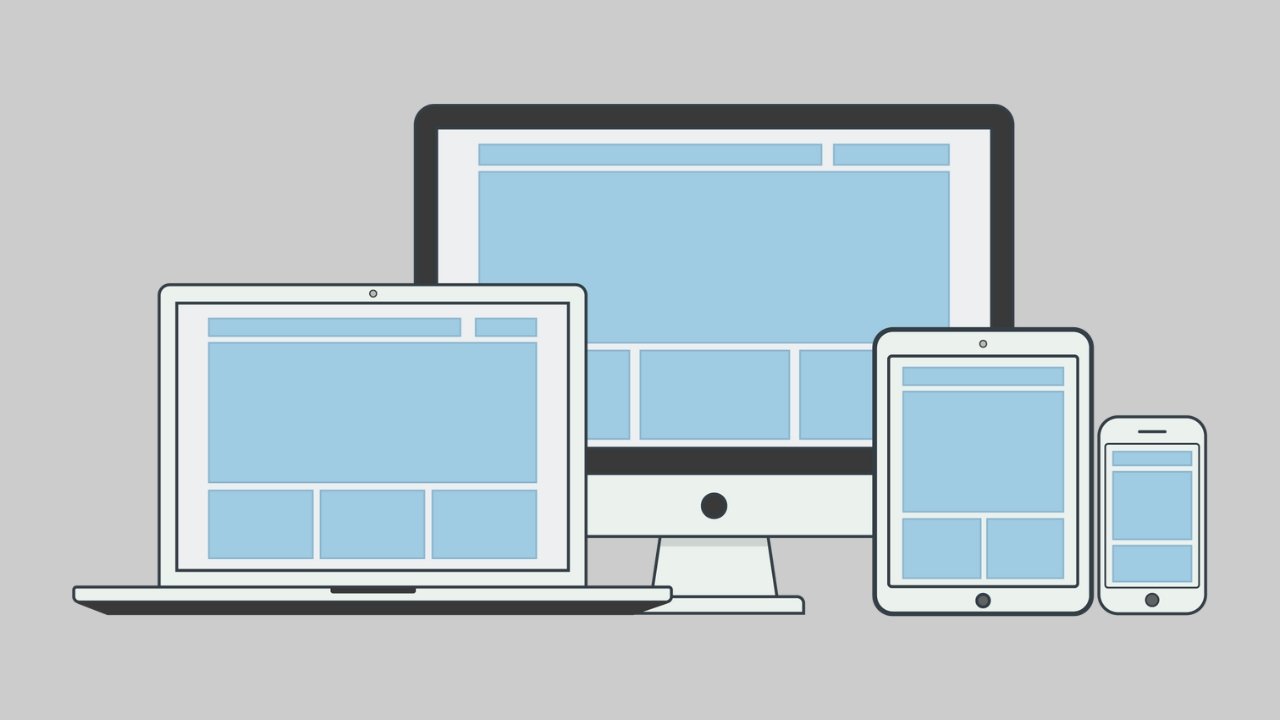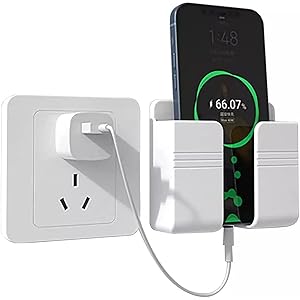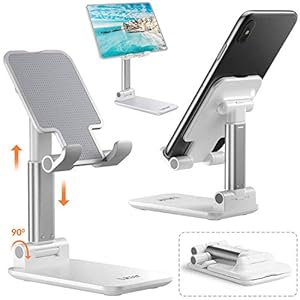
Ever tried becoming a sq. peg right into a spherical gap? That’s what designing mobile apps looks like with out contemplating layouts for iOS apps. You need it to work on each machine, however it doesn’t. Many others have encountered the identical problem.
I’ve been there, too – grappling with app layouts that look good on one display dimension however distort or shrink awkwardly on one other. It may be irritating and time-consuming!
On this article, you’ll uncover the important thing to a website design, forming adaptable designs that modify simply throughout varied devices and show sizes. We are going to discover methods to arrange your improvement surroundings accurately, design optimized layouts, implement responsive parts successfully, and, extra importantly – troubleshoot frequent points you would possibly face.
Constructing Responsive Layouts: The Step-by-Step Information
TechAhead builds all internet apps and cellular functions, together with these with responsive layouts for iOS apps. Our course of includes a number of key steps:
- Figuring out Person Wants: We begin by understanding what our shoppers need their customers to realize with the appliance.
- Crafting Wireframes: Subsequent comes creating wireframes, which function blueprints for the ultimate design.
- Choosing Appropriate Components: We select acceptable parts, like buttons, textual content fields, and so forth., based mostly on machine specs.
- Making Use Of AutoLayout: To make sure responsiveness, we use AutoLayout – a device Apple offers that mechanically adjusts interface parts based mostly on modifications within the display dimension.
- Testing: We conduct rigorous testing to make sure the app’s structure performs properly throughout completely different gadgets and orientations.
On this period of mobile-first design methods, recognizing the significance of responsive layouts is important. With a user-friendly interface that adapts seamlessly to numerous screens and orientations, your iOS app can ship an enhanced consumer expertise, resulting in increased engagement charges.
Highlighting the Significance of Responsiveness
On this digital age, having a responsive structure on your iOS apps is now not an choice however a necessity. With the fast enhance in cellular utilization, making certain that your app delivers an optimum expertise throughout all gadgets and sizes of the display is paramount.
The Rise of Cell Utilization
A current report by Statista revealed over 6 billion smartphone customers worldwide. This quantity is projected to achieve 7.33 billion this 12 months. Moreover, DataReportal’s World Digital Overview reveals folks spend over 40% of their web time on cellular gadgets.
Person Expectations and Expertise
Customers right this moment anticipate seamless navigation and interplay with functions no matter their machine. A examine carried out by Google Assume Insights discovered that if an app or web site doesn’t fulfill customers’ expectations, they’re more likely to change to a different one instantly.
The Affect on Enterprise Success
A well-designed and responsive web site design structure can considerably influence enterprise success elements akin to buyer satisfaction, conversion charges, and search engine rankings. Based on analysis from Clutch Co, companies with optimized cellular web sites tripled their probabilities of growing their buyer base as much as 5 occasions in contrast with those that don’t have one.
At TechAhead, we perceive the significance of building responsive layouts for iOS apps. We focus on creating internet and cellular functions which can be visually interesting and use the newest responsive design rules by offering a seamless consumer expertise throughout all gadgets.
Guaranteeing a Easy Person Expertise Throughout A number of Units
Creating an app that capabilities seamlessly throughout a number of gadgets is essential in cellular utility improvement. That is very true for iOS cellular apps, the place customers anticipate high-quality efficiency and a clean consumer expertise no matter display dimension or mannequin.
Understanding Responsive Layouts
Step one in the direction of making certain this seamless performance lies in understanding responsive layouts. A responsive structure adjusts its design based mostly on the display dimension and orientation to supply optimum viewing and interplay for optimum consumer expertise. It permits your iOS app to look nice on every thing from smaller iPhone SE screens to bigger iPad Professional shows with out extra coding.
A Step-by-Step Information to Constructing Responsive Layouts for iOS Apps

To create a responsive structure on your iOS app, observe these steps:
- Decide Your Breakpoints: You’ll must resolve at what factors your design will change based mostly on different-sized screens.
- Create Versatile Grids: Your grids ought to be capable of resize themselves relying on the viewport width.
- Use Auto Format: This device supplied by Apple helps you outline guidelines (constraints) about how views and UI parts relate to one another relating to positioning and sizing.
- Prioritize Content material: Final however not least, make sure that vital content material stays distinguished it doesn’t matter what machine it’s seen on.
TechAhead has intensive expertise constructing all varieties of internet apps and cellular functions, together with these with responsive layouts. We perceive the significance of offering a clean, user-friendly expertise throughout a number of gadgets and are dedicated to serving to you obtain this purpose.
1. Create Wireframes & Mockups
When you perceive your customers’ wants, begin creating wireframes or mockups of the appliance utilizing instruments like Sketch or Adobe XD. These visible hierarchy guides characterize the skeletal framework of your app and function a blueprint for its design and performance.
2. Choose The Proper UI Components
Your selection of responsive UI parts can considerably influence how customers understand and use your app. For instance, buttons ought to be massive sufficient for simple tapping; textual content should be legible even on smaller gadgets and screens; photographs should scale properly throughout completely different gadgets and font sizes with out dropping high quality.
3. Leverage Auto Format Constraints
Auto Format constraints, provided by Apple’s improvement surroundings Xcode, enable builders to create versatile interfaces that reply appropriately no matter display dimension or orientation modifications.
Keep in mind: Constructing responsive layouts isn’t nearly making issues look good—it’s additionally about making certain usability throughout all gadgets.
Setting Up the Growth Surroundings

Making a responsive structure for iOS apps begins with organising your improvement surroundings. You must get every thing in place earlier than you can begin constructing, similar to a chef prepares their kitchen earlier than cooking.
To begin, obtain Xcode onto your Mac. Apple’s built-in improvement surroundings (IDE) enables you to construct and design apps for all gadgets. Right here is the hyperlink to obtain Xcode.
1. Xcode Set up Steps
You’ll discover this course of much like downloading some other software program:
- Go to the Apple App Retailer in your Mac and seek for ‘Xcode’, then click on Get as soon as it seems.
- Sort ‘Xcode’ into the search bar and click on Get as soon as positioned.
- Wait as your pc downloads and installs Xcode mechanically.
The set up could take a while due to its massive dimension. So, whereas ready, seize a espresso or do one thing productive.
2. Coding Languages: Swift & Goal-C
As soon as put in, familiarize your self with Swift or Objective-C– these are programming languages utilized by TechAhead when designing app layouts. Swift, significantly, has gained recognition because of its simplicity and energy over current years.
3. Create Your First Challenge
To make sure every thing works completely advantageous after setup, create an preliminary challenge in XCode, which gives you hands-on expertise in precise coding follow. Click on File > New > Challenge from the menu choices inside the XCode interface, then choose the suitable template based mostly on wants.
In essence, making a improvement surroundings on your iOS app is akin to constructing the muse of a home. It might be greatest to have it stable in order that every thing you construct on prime will maintain up. With Xcode put in, understanding Swift or Goal-C underneath your belt, and an preliminary challenge underway – you’re able to dive into designing responsive layouts.
Designing the Format

In terms of iOS app development, making a responsive structure is important. It’s about extra than simply aesthetics; you’re shaping the consumer expertise. At TechAhead, we’ve gained information over time on how important this process is.
A well-designed structure can adapt to consumer suggestions out of your audience on completely different gadgets and display sizes with out compromising performance or look.
Figuring out Your Viewers’s Most well-liked Units
Step one is knowing your audience and their most well-liked machine sorts. To begin designing a sensible structure on your iOS utility, it helps to know what gadgets your audience prefers. You want knowledge on which iPhones or iPads they use most steadily so to optimize accordingly.
The Apple Developer web site provides useful assets on machine utilization statistics and design tips for every mannequin.
2. Choosing Applicable Responsive Design Components
Shifting ahead with these insights permits us to pick out acceptable design parts – buttons, photographs, textual content fields – based mostly on the typical display dimension of our audience’s most well-liked gadgets. This strategy ensures consistency throughout varied screens whereas enhancing usability.
We’ve discovered instruments like Sketch and Adobe XD extremely helpful when deciding on different parts, permitting designers to visualise their work in real-time on a number of display layouts concurrently (Adobe XD).
3. Guaranteeing Seamless Person Expertise Throughout Units
- You’ll desire a clear hierarchy of data: prioritizing vital capabilities by putting them on the prime of your structure.
- Navigation ought to be intuitive and easy. Purpose to cut back the variety of faucets wanted to entry key options.
- All the time design with thumb-friendly zones in thoughts – these are areas simply reached whereas holding a tool single-handedly.
These parts guarantee your app works easily on completely different gadgets – key for conserving customers engaged. For extra insights, take a look at the research by Nielsen Norman Group.
Implementing Responsive Parts

Creating an iOS app that capabilities optimally throughout all devices is important. One key aspect to this purpose is the implementation of responsive parts. What does it indicate for a component to be ‘adaptable’?
A responsive element adapts its dimension and structure in keeping with the display dimension and orientation of the machine. This flexibility provides your app an edge, making certain a constant consumer expertise throughout completely different iPhone fashions.
Apple’s Human Interface Guidelines advocate prioritizing adaptability in design. The corporate offers Xcode’s Auto Format toolset, which helps you to create versatile UIs for a number of screens.
1. Making Use of Constraints
The core precept behind implementing responsiveness lies inside constraints – guidelines defining how responsive parts relate to one another and their guardian view.
To begin, specify horizontal and vertical constraints for every interface object. This helps decide their place relative to others or edges of the super-view.
2. Leveraging Stack Views
You possibly can additional streamline your design course of utilizing stack views (UIStackView). They mechanically handle structure based mostly on set parameters like spacing, alignment, and distribution – making it simpler than ever.
3. Tailoring Designs with Measurement Courses
Past simply adjusting dimensions, reaching really adaptive layouts typically wants variations in design relying on the display dimension or orientation.
That is the place font dimension and courses come into play. These summary measurements enable designers to categorize gadgets based mostly on font sizes and show traits, serving to them tweak designs accordingly.
For instance, iPads are smaller gadgets normally assigned Common and font sizes and dimension widths, whereas iPhones have Compact widths.
You need to use dimension courses to change the variety of parts seen on the display or change their association based mostly on machine sort. Keep in mind, creating an app that feels proper at dwelling throughout all gadgets is extra than simply scaling; it’s about giving a tailor-made, user-friendly expertise.
Testing Design Layouts

As we create our iOS app layouts, testing turns into a significant step. This ensures that your design works properly throughout completely different gadgets and display sizes.
To ensure that customers obtain an excellent expertise on their machine, analyzing your design throughout all the weather and sizes of the display is vital. This contains iPhones of all fashions and iPad variants.
Give it some thought this manner: You wouldn’t purchase a brand new pair of footwear with out attempting them on first as a result of they won’t match proper or be snug. It’s the identical with designing for a number of screens; it’s a must to make sure that every thing works completely.
1. Choosing Units for Testing
You don’t want each Apple machine underneath the solar, however strive testing your responsive layout utilizing consultant fashions from small (iPhone SE), medium (iPhone 12 Professional) to massive gadgets (iPad Professional). These ought to cowl most consumer situations and catch any main points.
2. Discovering Points By way of Testing
Completely different issues can floor once you begin testing your designs throughout various gadgets – overlapping parts, font dimension too small, or massive buttons are just a few examples. Like how skilled cooks style their dishes earlier than serving them up – designers should do related assessments with their cellular apps.
Xcode provides wonderful debugging instruments akin to ‘View UI Hierarchies’, which lets us look at every layer inside our consumer interface carefully, serving to us discover the place issues could have gone incorrect throughout implementation.
- ‘Gradual Animations’: By slowing down animations, builders can higher perceive the transitions and interactions between parts.
- ‘Coloration Blended Layers’: This device helps establish layers which can be being overdrawn, which may have an effect on efficiency. It colours these areas pink to spotlight potential points.
Optimizing Efficiency

Your iOS app’s responsive structure should carry out easily, no matter the machine or the user-friendly-sized display. The efficiency optimization journey begins with the environment friendly use of assets.
1. Efficient Use of Sources
The important thing to optimized efficiency lies in utilizing your assets successfully. It’s like operating a finely tuned machine; every half ought to operate most effectively. This implies understanding how completely different parts work together and optimizing their interactions for velocity and effectivity.
Keep away from pointless computations by caching outcomes the place doable. Caching is akin to jotting down a recipe as a substitute of attempting to recollect it each time you cook dinner – it saves effort and time.
2. Picture Optimization
Apple’s tips on picture optimization recommend we should purpose for the correct stability between picture high quality and file dimension. Think about stuffing a king-sized comforter right into a small washer – not sensible. Equally, massive photographs can decelerate your app significantly.
You possibly can cut back picture sizes with out compromising high quality utilizing varied on-line instruments like TinyPNG.
3. Coding Practices
Clear coding practices go far in bettering an utility’s efficiency, too. Code muddle slows down apps similar to visitors congestion slows us down throughout rush hour commutes.
- Ruthlessly eradicate useless code (unused variables/capabilities).
- Leverage lazy loading methods much like ordering pizza once you begin feeling hungry – get what you want exactly once you want it.
- Make certain to make use of synchronous and asynchronous calls judiciously. It’s like deciding whether or not to name a buddy (synchronous) or ship them a textual content (asynchronous).
4. Testing Efficiency
No optimization strategy is full with out testing its efficacy. Apple’s Devices device permits you to monitor your app’s real-time efficiency, serving to establish bottlenecks.
Optimization improves an app’s velocity and ensures its efficiency stays constant regardless of modifications. It additionally ensures the app stays speedy, even when including new options, squashing bugs, or updating the newest iOS variations.
Troubleshooting Widespread Points

Creating responsive layouts for iOS apps is just not with out its challenges. Typically, even essentially the most meticulously designed structure can encounter points when seen on a unique machine or a unique dimension display.
You possibly can confidently handle any design challenges with the correct instruments and understanding. Let’s delve into some sensible methods that TechAhead employs to repair typical hiccups along with your web site designs.
1. Flickering UI Components
If parts in your app flicker when transitioning between completely different states or views, it’d point out a synchronization subject between varied layers of the app’s Person Interface (UI). One strategy to resolve this drawback is utilizing CAMetalLayer, which offers high-performance rendering capabilities and minimizes graphical glitches.
2. Inconsistent Format Throughout Units
Typically, an app could look good on one machine however fully disarrayed on one other. This normally stems from hard-coding dimensions as a substitute of using relative sizing methods like Auto Format. Apple’s official documentation about Auto Format is a wonderful useful resource in the event you need assistance understanding methods to implement dynamic sizing strategies successfully inside your utility.
3. Poor Efficiency On Older Units
Regardless of how lovely an app appears to be like, customers will abandon it quicker than a sinking ship if it doesn’t carry out properly throughout all gadgets – particularly older ones. Take a look at your app on completely different {hardware} configurations to make sure clean efficiency throughout a number of generations of iPhones and iPads. Instruments like XCode can simulate older gadgets and assist establish efficiency bottlenecks.
4. Misaligned Contact Targets
One other frequent subject is contact targets not aligning accurately with the display dimension, making the app troublesome or irritating. Once more, Auto Format involves the rescue by permitting you to outline constraints for interactive parts relative to different views, making certain a constant and optimum consumer expertise no matter machine dimension.
FAQs- Layouts for Ios Apps:
How do I get completely different app layouts on my iPhone?
You need to use Apple’s native instruments like SwiftUI or third-party apps to customise your iPhone structure.
Can you alter the structure of apps on iPhone?
iOS 14 and above enables you to alter your own home display utilizing App Library and Widgets for a novel look.
How do I arrange my iPhone apps aesthetically?
Group related apps collectively to make your iPhone extra visually interesting, leverage colour coding, or apply themed icons with Shortcuts.
How one can construction an iOS app?
Create a stable construction by planning the navigation circulate first. Use the Mannequin-View-Controller (MVC) sample as a place to begin, then refine it based mostly on wants.
Contact TechAhead right this moment for all of your internet and cellular app improvement.
Interior Picture Credit score: Supplied by the Writer; Thanks!
Featured Picture Credit score: Supplied by the Writer; Thanks!
Trending Merchandise



![CRATIX 360°Rotatable and Retractable Car Phone Holder, Rearview Mirror Phone Holder [Upgraded] Universal Phone Mount for Car Adjustable Rear View Mirror Car Mount for All Smartphones](https://m.media-amazon.com/images/I/410N7NZtIjL._SS300_.jpg)





![Car Phone Holder Mount, [Military-Grade Suction & Super Sturdy Base] Universal Phone Mount for Car Dashboard Windshield Air Vent Hands Free Car Phone Mount for iPhone Android All Smartphones](https://m.media-amazon.com/images/I/51KK2oa9LDL._SS300_.jpg)
